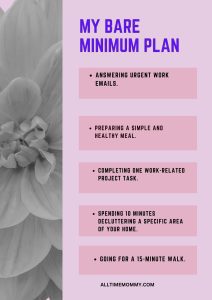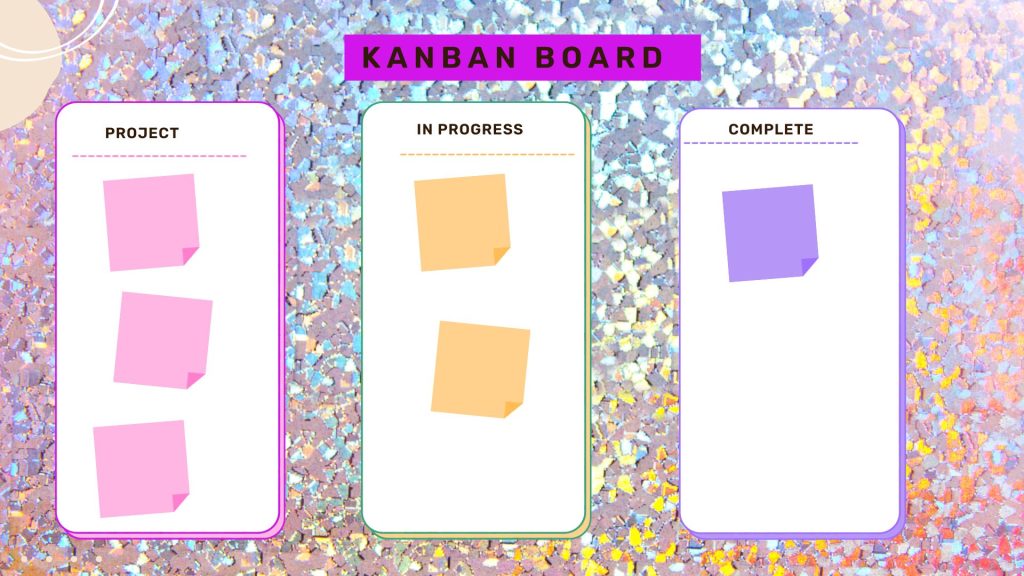Are you a lazy girl who often finds yourself running late? Follow this simple lazy girl guides to get things done on time – every time.
We’ve all had those days when the thought of tackling a to-do list feels as daunting as climbing Mount Everest.
Despite being fully aware of what is required, you keep rolling on your bed, scrolling your Instagram account and simply sipping your cup of coffee.
Mama, enough of that.
Whether you’re a self-proclaimed “lazy girl” or simply someone who occasionally craves an effortless approach to productivity, you’re in the right place.
Welcome to a world where sluggish mornings and afternoon siestas can coexist harmoniously with achieving your goals and conquering your tasks.
In this lazy girl guide, we’ll explore the art of getting things done with the least possible effort.
Are you excited about these? Keep reading.
Affiliate Disclosure: As an Amazon Associate, I get a small commission for purchases made from Amazon.com through links in this post. Learn more about our affiliate disclaimer here.
Related:
Lazy Girl Guide for Getting Things Done on Time
1. Learn To Show Up for Yourself
Mama, you have been loyal to other people for quite some time. Why not transfer this loyalty to yourself?
I mean,
Think about your friends and family; how many times have you put your own needs on the back burner for their sake?
As a mother, you’ve consistently been there for your children, day or night, whenever they needed you.
For those in the corporate world, you somehow understand the art of showing up daily for your 9-5 job to build someone’s vision regardless of your feeling.
But what about you?
How come you don’t show up for yourself by doing things that bring direct value to you?
In my many years of pursuing my goals, I’ve learned that showing up for what you want is a critical factor in the recipe for success.
The problem, however, starts when it’s time to show up for ourselves. We tend to look for excuses, procrastination and, in the end, receive from ourselves what is below average.
Choose to wholeheartedly embrace the idea of being present for yourself , even when your motivation is lacking.
Why?
Because that’s precisely what you do for everyone except yourself.
When your inner voice urges you to take action, make it a habit to honor that call. No one will penalize you if you don’t, but you’ll miss out on the opportunity for greatness.
Whether it’s self-care, completing that task now, enrolling in a course, or launching a business, commit to showing up for yourself when you need it most.
The best way to get off the ground, is to use a good habit tracker like this one.
This tracker provides visual accountability journal and can help you to keep up with your daily routines. its also undated and provides a way to edit your habit tracking journal, see your progress and change for better.
Simple tips that may push you to show up for yourself, even when you’re feeling lazy or unmotivated.
- Visualize Success with emotions: Imagine how you’ll feel once you’ve completed a task or reached a goal. Visualizing success can boost your motivation.
- Find a strong ‘Why’: Knowing your “why” can provide the motivation you need to push through laziness.
- Practice Mindfulness: Being Mindful can help you become more aware of your thoughts. You learn to manage your feelings, especially those that puts you down.
- Find an Accountability Partner: Share your goals with a friend who can hold you accountable and provide support when necessary. Make a habit of meeting up and sharing your weekly wins.
- Reward Yourself: Give yourself some rewards for completing tasks. It can be something as simple as a treat, a short break, or doing something enjoyable.
2. Define the Bare Minimum You Can Do for Productivity in a Day
How do you sincerely define a productive day?
Ask yourself this simple question: what is these one or two things when you achieve, will you consider your day productive?
The “bare minimum” for productivity refers to the least amount of effort or work you can do to maintain a minimum level of productivity and meet essential responsibilities.
While setting your ‘bare minimum always’ remember that it is a short-term strategy for maintaining a minimum level of productivity when you’re faced with constraints or challenges like laziness.
Setting bare minimum levels for productivity is crucial.
It helps you to find a balance that allows you to meet your essential responsibilities without compromising your likes or overall well-being.
By understanding the minimum work required for productivity, you can better balance your work and personal or leisure life.
You want to at least show up for yourself and accomplish something before going back to your lazy zone.
Examples of a bare minimum plan could include tasks like:
-
- Answering urgent work emails.
- Completing one work-related project task.
- Going for a 15-minute walk.
- Preparing a simple and healthy meal.
- Spending 10 minutes decluttering a specific area of your home.
Remember that the bare minimum plan is a tool for maintaining productivity on days when you lack motivation or have limited time. It ensures that you make progress toward your goals, even if it’s just a small step forward.
3. Clarify Your Major Task and Break it into Smaller Tasks (Create Processes)
Think about any industrial process. Before getting the end product, everything is divided into processes for easy management.
Breaking down major tasks into smaller, more manageable components is a fundamental strategy for boosting daily productivity.
By dividing a major task into smaller subtasks, you can gain a more precise and achievable path toward completion.
This approach alleviates the overwhelming feeling often accompanying large projects, enabling better focus and reduced procrastination.
Furthermore, as each subtask is completed, you acquire a sense of accomplishment which can enhance motivation and the drive to continue working.
Please come up with a way of breaking your mountain into hills. Then, push off that hill one at a time.
Doing so will help improve your focus, and reduce procrastination.
Here are simple tips that may help;
- Make it your habit to work on simple tasks immediately. If a job will not take more than an hour to accomplish, then tackle it immediately. Example; Break your primary task into 3 simple tasks you can tackle in a day. Assign each simple task a percentage so that as you work, you mark it as” 30% done.” or something like ‘I have only a quarter left to finish’.
- Make the first step very clear and very small. After you accomplish the first step, you get more motivation and are much more likely to continue with the next task.
- Have an apparent finish line. Simplify the last task you wish to tackle before ending your day or retrieving into your lazy zone of endless social media. Make your last task interesting to motivate you to work fast towards.
4. Embrace the Pomodoro Technique
The Pomodoro is a technique for time management that aims to improve your productivity.
It’s designed to improve productivity and focus by breaking work into intervals (usually 25 minutes) separated by short breaks.
The main trick when using the Pomodoro technique is to identify your flow and stick to it.
Some people can take 30 mins, or 40 mins or even less.
Finding out how long you can work on something continuously before taking a break will help you plan your schedule effectively.
Trying out these techniques may shock you when you realize how productive you can be in a day. Most stuff we procrastinate takes a shorter time to complete than one episode of our favorite TV show.
Here’s how to apply the Pomodoro Technique effectively:
- Choose a Task
Select the task you want to work on. It could be a specific work project, studying, writing, or any task that requires your focused attention.
- Set a Timer
Set a timer for a fixed period, traditionally 25 minutes (a single Pomodoro). This time is called a “Pomodoro.” You can use a physical timer, a smartphone app, or an online timer.
- Work on the task
During the Pomodoro, work on your chosen task with full concentration, avoiding any form of distractions.
- Stop When the Timer Rings
When the timer rings, stop working on the task, even if you’re in the middle of something. This is important to train your brain to focus within a defined time frame.
- Take a Short Break
After each Pomodoro, take a short break of around 5 minutes. Use this time to stretch, walk around, or do something unrelated to work. The break serves as a reward and helps prevent burnout.
- Repeat
Repeat steps 1 to 5 for each Pomodoro. After completing four Pomodoros, take a longer break of 15-30 minutes.
- Record Progress
Keep a record of completed Pomodoros and what you achieved during each one. This record can help you track your productivity and make improvements.
Tips for making your Pomodoros effective
- Choose Appropriate Task Length: While 25 minutes is the standard Pomodoro length, you can adjust it to suit your concentration and energy levels. Some people find 15 minutes more suitable, while others can work effectively for longer periods.
- Eliminate Distractions: During your Pomodoro, turn off notifications, close unnecessary tabs or apps, and create a distraction-free environment.
- Prioritize Tasks: Start with the most important or challenging tasks first. This ensures that you tackle your highest-priority work when your focus is at its peak.
- Stay Flexible: If something urgent comes up, you can pause your Pomodoro timer. The technique is a tool to help you, not a strict rule.
- Experiment: Everyone’s work style is different. Experiment with the Pomodoro Technique to find the optimal balance for your needs.
- Continuous Improvement: Review your Pomodoro records to see how you can enhance your productivity. Consider whether you need to adjust the length of your Pomodoros or make other changes.
The Pomodoro technique is an excellent way to manage your time and improve productivity by breaking your work into manageable intervals and maintaining focus. It’s particularly helpful for combating procrastination and maintaining a work-life balance.
Ready to break your bad habits by eliminating distractions? start by getting this phone safe box with a timer.
This item is a game changer for people who want to break certain habits but lack the willpower. kSafe Mini Container will help you manage your minor addictions like social media and build good habits by locking away your credit cards, junk food, your phone, cigarettes, or any other substance you want to cut down.
5. Using a Personal Kanban Board for Tasks that Need More Time
A personal Kanban board is a visual task management tool that enables you to track and manage the progress of tasks.
A personal Kanban may be similar to your To-Do- List; however, it allows you to place the jobs in front of you, focus on a few at a time, and watch these tasks move into the Done column.
By doing so, you can manage your time and efforts accordingly.
Key ideas which drive Personal Kanban include:
- Make your work visible.
- Limit the amount of work in progress.
- Watch your to-do-list move and get done
The fundamental components of a Kanban board include:
- Columns: A basic Kanban board is typically divided into three columns that represent different work stages or statuses in a workflow. Common columns have “To Do,” “In Progress,” and “Done.” The specific column names can vary based on the nature of the work being managed.
- Cards or notes: Work items or tasks are represented as cards or sticky notes. Each card corresponds to a specific task or piece of work. These cards move through the columns as the work progresses.
- Visual Signals: The position of each card on the board provides a visual signal of its current status. For example, a card in the “To Do” column indicates that the task has not yet been started, while a card in the “Done” column signifies that the task is complete.
The typical workflow on a Kanban board involves tasks or cards moving from left to right across the columns as they advance in the process. The primary purpose of a Kanban board is to make work and its status visible, which facilitates the following:
- Workflow Management
- Task Prioritization
- Limiting Work in Progress (WIP)
- Continuous Improvement
What you need to do
- Grab a card, magnetic labels or sticky notes.
- Write down everything you need to do for the day. One task per card or sticky note. You should break down Larger projects or goals into smaller tasks you can accomplish.
- Get a board of your choice and place it somewhere strategically. This can be a poster board, a whiteboard, or a large sheet of paper. You may also buy personal-size “Kanban for one” whiteboards, folding boards, or standing boards that are ready-made for you.
- Create three columns: To Do, Doing, and Done.
- Decide how many tasks you can work on in a day based on the complexity or duration it takes to do that work. This is your WIP limit. You may limit your WIP to Two or three tasks. Ensure you use time blocks. Allocate specific time blocks for each task on your list. For example, you might commit 30 minutes to task A and 45 minutes to task B.
- Stick all your notes on the board in the To-Do column in order of priority, with the most important ones at the top.
- Move the first couple over to Doing — and get started.
- When you finish one task, reposition it under Done and pull a new one into Doing
- Rinse, repeat and improve.
The Kanban technique emphasizes the importance of reducing waste and increasing efficiency.
It’s a flexible tool that can be adapted to various workflows, making it popular in Agile project management, household chores, and other methodologies.
Kanban boards are typically physical, but digital tools and software have become increasingly popular for the convenience of managing tasks electronically.
When you get started;
- Overcoming the “there’s always time” mentality if you want to get things done. Set your timeframe and stick with it. Stop telling yourself you can do it tomorrow because the grace is for today and now.
- It does not have to be perfect. Letting go of the need for perfection is a massive step for getting things, especially for self-proclaimed perfectionists. I know you want to research twice, but going above average may be good enough.
Wondering which whiteboard set to start with, buy here.
6. Embrace A “Dopamine Detox” for a Long-term Change
A “dopamine detox” is a symbolic way of describing a strategy to improve focus, reduce distractions, and increase productivity.
You don’t want to remain in ‘the lazy era’ forever.
The idea behind a dopamine detox is that your modern life is filled with many distractions.
With constant access to various sources of entertainment and information like social media, most people find it challenging to concentrate on their goals due to overstimulation.
This overstimulation usually leads to a constant craving for “dopamine hits” from these sources of instant gratification, making it challenging to focus on more important tasks.
A dopamine detox typically involves the following steps:
- Eliminating or Reducing Stimuli: During a dopamine detox, you consciously eliminate or reduce exposure to highly stimulating activities, especially those that are not productive or meaningful. This could include temporarily quitting social media, limiting screen time, or avoiding other sources of instant gratification. You may start by getting this ksafe time locking container to help you reduce distractions.
- Focusing on Productive Tasks: The freed-up time and mental energy can be directed toward more productive and meaningful tasks. This might involve working on your goals, studying, or engaging in other productive tasks.
- Gradual Reintroduction: After a period of detox, you can reintroduce some of the previously eliminated activities, but in moderation. The key is to strike a balance between enjoying leisure activities and maintaining productivity.
The goal of a dopamine detox is to reset your brain’s reward system, reducing the constant craving for short-term pleasures and retraining your focus and discipline.
By giving your brain a break from overstimulation, you can become more engaged and productive in your work and personal pursuits.
Best Safe Time Locking Containers
7. End Your Day with Affirmation
Affirmations are positive statements that can shape your mindset and attitude.
By ending your day with affirmations, you reinforce a positive outlook, which can carry over to the next day.
This positive mindset will help you approach your tasks with greater enthusiasm and confidence, making you more productive.
Positive affirmations can improve your self-esteem and self-image. When you believe in your abilities, you are more likely to take on challenges and tasks with a can-do attitude, which increases your productivity.
Furthermore, Affirmations can reduce anxiety and foster a sense of resilience.
This means that when you face setbacks or challenges, you are more likely to bounce back and continue working towards your goals. This resilience can keep you on track and prevent productivity losses due to discouragement.
Ending your day with affirmations can be a powerful practice that not only boosts your mental well-being but also indirectly contributes to increased productivity.
Here are Best Affirmations To Get You Out Of Your Lazy Zone
- “I have the power to overcome laziness and take action.”
- “Every small step I take today brings me closer to my goals.”
- “I am motivated, focused, and ready to tackle my tasks.”
- “I choose to be proactive and make the most of my time.”
- “I embrace challenges as opportunities for growth and improvement.”
- “I am the master of my time, and I use it wisely.”
- “I find joy and satisfaction in completing my tasks.”
- “My energy and enthusiasm are boundless, propelling me toward success.”
- “I am a doer, not a procrastinator, and I am in control of my actions.”
- “I love the feeling of accomplishment that comes from getting things done.”
- “I am committed to self-improvement and reaching my full potential.”
- “I choose to be productive and make the most of each day.”
Feel free to customize these affirmations to better resonate with your goals and challenges. Repeating these positive statements regularly can help shift your mindset and motivate you to overcome laziness and take meaningful action. Also consider getting physical affirmation cards for more inspiration.
Up Next:
-
6 Power Principles That Can Make Any Woman Unstoppable
-
21 Monthly Habits of Every Woman With Growth Mindset
-
How To Become An-All-Time Classy Woman









